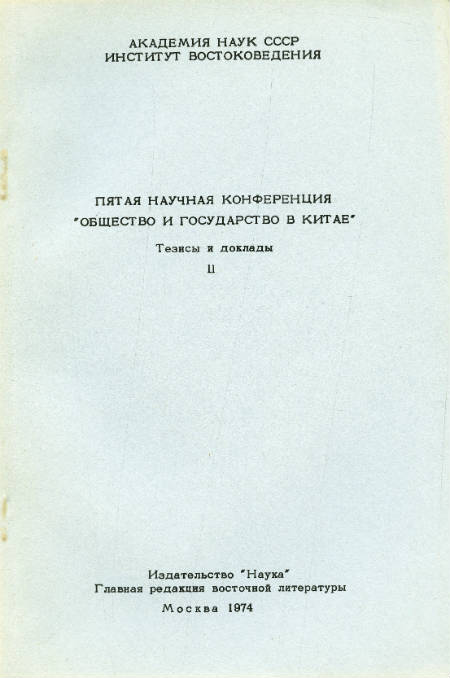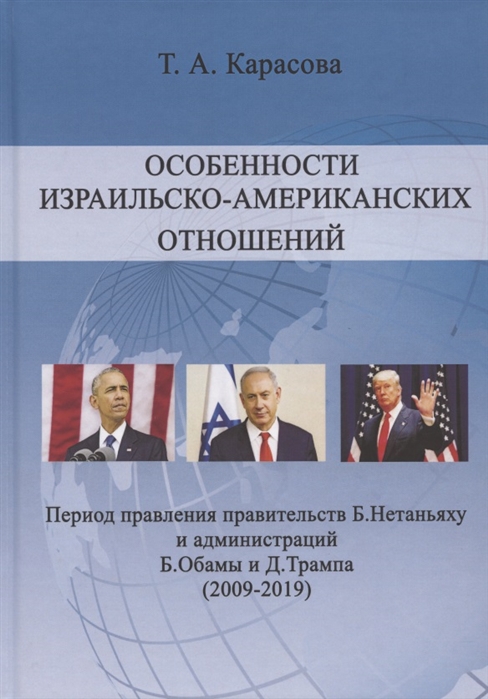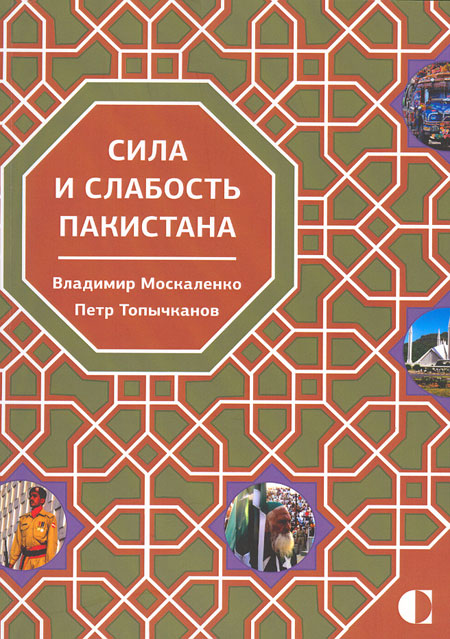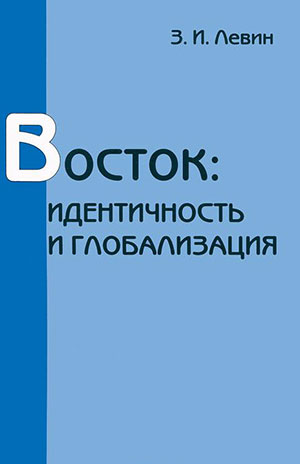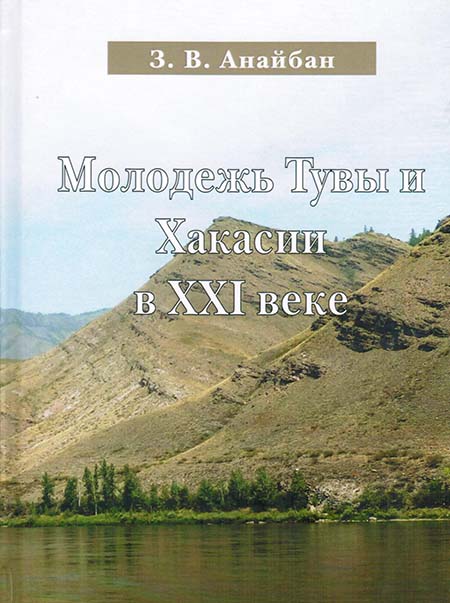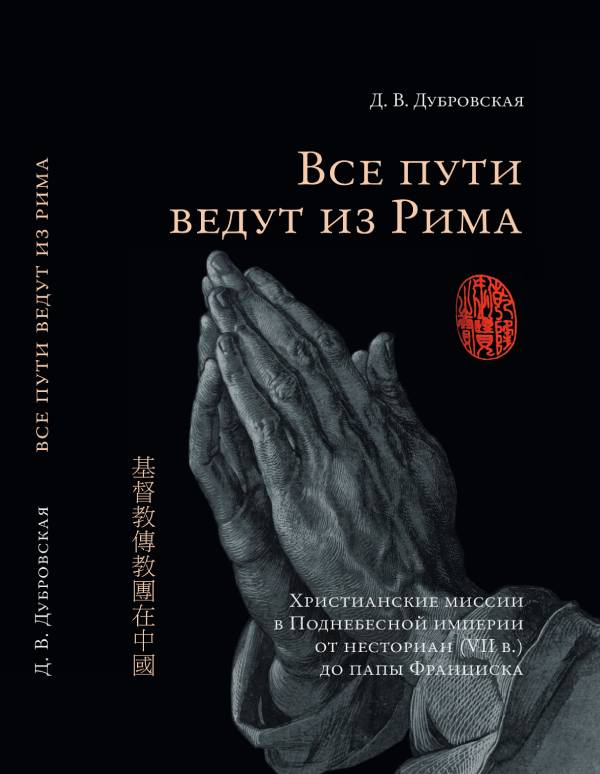Book
All Roads Lead from Rome. Christian Missions in the Celestial Empire from the Nestorians (7th Century) to Pope Francis
Еditor: Vasilyev Dmitri
Institute of Oriental Studies of the Russian Academy of Sciences
Москва, 2020, 372 p.
We examined here the complex sequence, interaction and interplay of four Christian denominations, whose representatives for various reasons ended up in the territory of the Chinese Empire. The pseudo-Nestorians were covered in this study not only for reasons of chronology, but also because of the need to consider the first, and rather successful, approach to accommodating the principles and values of Christianity in a radically different confessional environment. Perhaps it was what Voltaire and the philosophers of the Age of Enlightenment called the ‘atheism’ of the Chinese—the predominance of morals and ethics in the spiritual teachings of China; its ceremonial rather than religious ritual practices; and the millennia-old mode of reworking, absorption and incorporation into the Chinese ontological substrate of any and all alien systems of thought—that served as a precondition for not only the survival of the first Christians, but also for their involvement in the governments of the Tang and Yuan Empires.
The highly intellectual civilisation of the Middle Empire never rejected outright any equally highly intellectual and well-developed ideas if those did not pose a direct threat (in contrast to the clear and present danger of the nomadic periphery). In this admission and acceptance, no matter if condescending, several points seemed to be key, but above all, command of high literary written Chinese and the conceptual apparatus of Confucian treatises, which have long become a special language of communication for the Chinese literati — the Confucian shenshi, scholars who made up a million-strong army of managers, the state apparatus of the empire. If the representatives of Jingjiao — the ‘Luminous religion’ — not merely spoke their language, but were further able to translate their main confessional provisions and treatises into it, they were almost automatically seen as people useful to the state, and the fact that a number of Nestorian leaders were used for completely practical purposes, be it the erection of a column for Empress Wu Zetian or diplomatic missions, attests to that. At the time of the Mongol Yuan dynasty, Christians had a fairly high position at the court of the Mongol- Chinese emperors and had to somehow relate to the Franciscan ambassadors, missionaries at the court. This interaction was by no means always smooth, but after the Yuan, neither the Nestorians nor the Franciscans of the old Yuan dynasty’s mission survived in China.
The native Chinese dynasties, such as Tang and Ming, seemed to tolerate Christianity without ever showing a pronounced interest in the teachings of the preachers. In turn, representatives of Christianity in Chinese emigration, who highly valued their principles and values, could not understand that for the Imperial court, the shenshi, their status dangerously bordered on the status of various local sects and secret societies so widespread in the country. The central government, sometimes fond of Buddhism (like the Tang empress Wu Zetian), nonetheless did not consistently favour even Chan Buddhism; on the contrary, the monasteries were periodically stripped of their possessions and were generally seen as useless gatherings of idlers and breeding grounds for opposition. The fears were rather justified: none other than the founder of the Ming dynasty, the great Zhu Yuanzhang, emerged from the depths of both the secret society of Bailianjiao (White Lotus) and a Buddhist monastery. Even the Qing emperor Kangxi, who at first was quite supportive of Christians, especially the ‘king’s mathematicians’ so cherished by him — the court Jesuits — in his 1692 decree compared Christians to false ‘sects’, and in the more openly prohibitive decree of 1721 already to ‘fanatical sects of Buddhism and Taoism’; all this despite the fact that Buddhism, Taoism and Confucianism constitute the famous triad of Chinese beliefs — Sanjiao.
In the 17th–18th centuries everyone seemed to go to war with each other. By that time, the Jesuits had already reached the Peking court, survived the change of dynasties (the last proper Chinese Ming dynasty was swept away by the new Manchu Qing one) and flourished at the court as ‘mathématiciens du Roy’, advisers on calendar, astronomy, and later as artists, architects, hydraulic engineers, and even gunsmiths. This privileged position endured even as Christianity was persecuted throughout the rest of the empire, and caused a deep dissatisfaction of the other Catholic orders — the Dominicans, Franciscans and Augustinians. Especially the Dominican order, which extrapolated its enmity with the Jesuits back in Europe all the way to China, could not quite see how those means were justified by the ends of Christian preaching. Correspondingly, the famous Chinese Rites Controversy arose, which ultimately had an effect so destructive that it led to the dissolution of the Jesuit order; and finally, the Jesuit means met their (temporarily) final end. The only safety island for the official Christian presence in Qing China remained at court, where during the era of the ‘Three Great Reigns’ of the Kangxi, Yongzheng and Qianlong emperors, ‘intellectual tributaries’ survived — Jesuit masters led by the Italian Baroque artist Giuseppe Castiglione (Lan Shining). The work and life of Lan Shining artistically reflected the accommodative theory advanced by Matteo Ricci in the spirit of probabilism, making it possible to appropriate, accommodate and combine European and Chinese ideologemes; and, fortunately, this was exactly what his royal customers wanted.
The almost fourteen centuries of Christian preaching in China were not therefore a continuous succession of missionaries arriving to labour in the Middle Kingdom. Most of the Christian missions were not in concert with each other either ideologically, organisationally, or historically — neither by preaching methods nor even by time of arrival. The situation changed dramatically at the end of the 16th century, when a roundabout sea route to the Far East was opened and, through the efforts of representatives of the Jesuit Order, Matteo Ricci reached Beijing, thus paving the way for the successive waves of monks of other orders. The conditions, while not fully favourable, nevertheless became bearable, but now the European missionaries carried over to distant countries the divisions that plagued Catholicism in Europe.
The flexibility, readiness to make concessions, and adaptability of Jesuits could not help but engender a truly fatal conflict with the strict and principled approach to preaching professed above of all by the Dominicans. And so paradoxically, the mission of the Jesuits, even though it was anyway forced to fight to conquer and defend its breathing space, did not suffer quite as much from the rejection of the local Chinese population or from the persecution of the authorities (these could always be counted on, but they were also a test of the stability and commitment of the Christian church) as from their direct superiors in Rome and their fellow preachers.
Quite apart in this centuries-old history of Christianity in China stands the arrival of Nestorian monks into Tang China. These weren’t sent there by anyone in particular (in contrast to the missions of the Catholic orders, traditionally and officially engaged in catechesis in ‘pagan countries’, especially widespread in the era of the great geographical discoveries); and, without knowing it, in their preaching practice the Nestorians used techniques very similar to the ones Jesuits later rediscovered for themselves as they were trying to adapt the central symbols and concepts of Christian faith to Chinese concepts. Nestorians used the Buddhist conceptual apparatus for this; Jesuits tried to ignore Buddhism and realised that, fundamentally, China was a Confucian society. The Jesuits also completed another major historical arc by identifying China with the country of Seres, known to the Romans, and with Marco Polo’s Cathay.
Franciscan monks, successful travellers to the Mongol rulers, deserve a separate mention — these, even if they now seem to be something of a passing decorative phenomenon in the context of Christian preaching in China, turned out to be very successful as ambassadors of medieval rulers to the Mongols in the dangerous era of Mongol expansion. It was the Minorites who already began to guess that the country described by Marco Polo corresponded to the one they saw from the tents and palaces of the Mongol rulers. However, the Franciscan ambassadors were more diplomats than missionaries, even if the information they brought to Europe was unique historical evidence; and it is therefore unsurprising that the records compiled by them were noticeably inferior in value to the flood of information unleashed on Europe after Jesuits entered China. The Franciscans lacked both methodology and objectives, because they were sent to the Mongols for another purpose altogether — and though this purpose (the conversion of Mongol khans to Christianity) may in historical retrospect look naïve, it was at one time a major hope of European lords and potentates to create at least some constraints against Mongol invasion of Europe.
Sometimes the researcher gets the impression that for all its closeness, China, located “at the edge of the world,” could seem like a place where one could find a refuge. This is exactly what happened with the remnants of the Jewish community, first discovered in China by the same Matteo Ricci. With his characteristic ability to find common language with anyone, Ricci likewise found points of contact with the carriers of knowledge of the Old Testament. Unfortunately, his good-natured wisdom wasn’t easily inheritable, and pretty soon Catholic missionaries in China were mired in ideological disputes, causing the weakening of preaching in the Middle Empire and eventually leading to the prohibition of the Jesuit order in Europe and Christianity in Qing China.
The author hopes to study the activities and preaching of Protestants in China, as well as the practices of the Russian Orthodox Mission in Beijing and some other specific locations, in her next work; for now, summing up some key observations on what is happening in China in the late 20th – early 21st centuries, perhaps the strongest statement one can make is that Christianity still exists in China, and has a somewhat stable footprint. Most of the local Catholics do not recognise the authority of the Holy See, in many cases because such are the present terms of survival, but survive they do, and the number of baptised people is gradually increasing.
This work began with a photo of Pope Francis kissing a Chinese child in St. Peter’s Basilica in the Vatican, offered as a symbolic and hopeful depiction of further developments. Indeed, Pope Francis bears the name of the founder of the Franciscan order, who preached to the birds; he is also a Jesuit; and the grace of his pastoral kiss is directed at a Chinese child, whose parents are clearly happily included under the aegis of the Holy See.
As history shows, the Great Pontiffs — with rare exceptions during the Rites Controversy — tried, as originally intended in their position in Ancient Rome, to build bridges between peoples and cultures. One hopes that over these bridges, which once allowed apostolic missions to make their way from Rome to countries of the East, Catholics from these countries of the East will soon find their way back to Rome.


